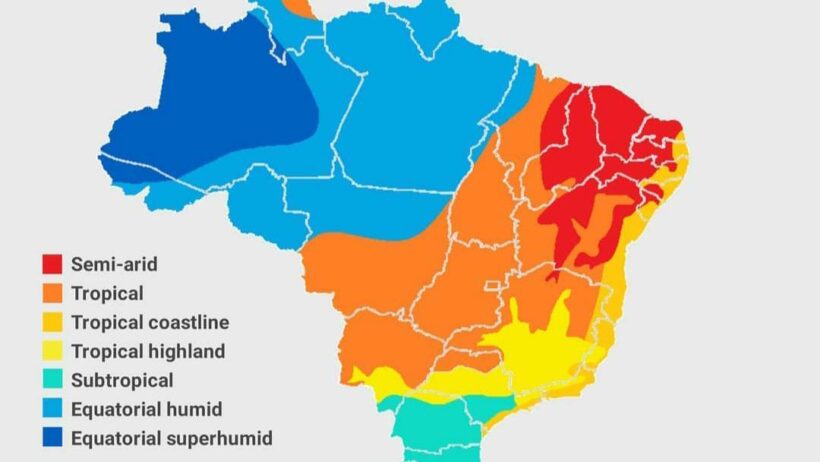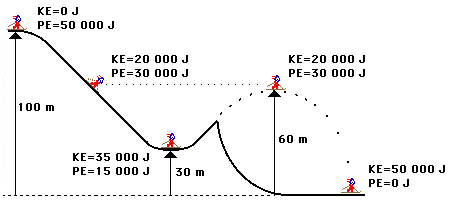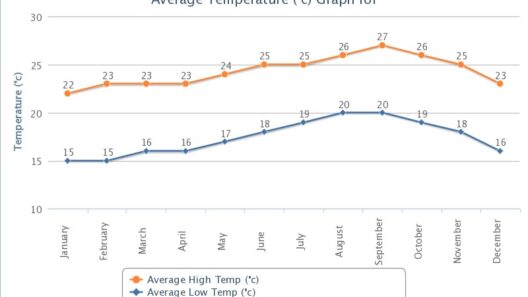Brazil is a colossal tapestry of diverse ecosystems, with climate variations ranging from the scorching heat of its northern Amazon Rainforest to the temperate breezes along its southern coastline. Each region of this vast country is animated by its own unique climate system, endowed with intricate interconnections that illustrate the complexities of Earth’s environment. Understanding Brazil’s climate is pivotal not only for its residents but for the entire planet, as the country plays a crucial role in global climatic patterns.
The climate of Brazil can be broadly categorized into five main regions: the Amazon, the Cerrado, the Atlantic Forest, the semi-arid Northeast, and the southern temperate region. Each of these areas is influenced by geographic location, topography, and the intricate dance between air masses, demonstrating the multifaceted nature of Brazilian weather.
Let us begin with the Amazon, the largest tropical rainforest globally, which serves as a vital carbon sink. It spans across northern Brazil and boasts a humid tropical climate highlighted by significant rainfall and high temperatures year-round. The Amazon Rainforest’s climate is characterized by consistent, oppressive heat with average annual temperatures hovering between 73-88°F (23-31°C). Rainfall is abundant, often exceeding 80 inches annually, fostering a rich biodiversity that is unparalleled anywhere else on the planet.
This climate system and its temperate precursors have a powerful knock-on effect beyond its borders. The Amazon influences global weather patterns, and its deforestation has ramifications far and wide, including alterations in precipitation patterns in regions as distant as North America and Europe. Consequently, the ongoing deforestation not only represents a significant environmental crisis but a dire intervention in Earth’s climatic equilibrium.
The Cerrado region, categorized as tropical savanna, lies directly to the south of the Amazon basin and presents a contrasting climate profile. While the Cerrado experiences a wet season from October to March, providing crucial moisture to sustain its manicured vegetation, the dry season that follows underscores a subtler climate variability – one that thrives on resilience. Here, the temperatures can soar as high as 104°F (40°C), a harrowing reality for the flora and fauna that have adapted to survive these oscillating conditions.
Indeed, the Cerrado is a remarkable ecological wonder and is often dubbed the “biological heart” of Brazil for its significance in sustaining water supplies and influencing regional rainfall. However, the encroachment of agricultural practices and deforestation threatens not only the region’s delicate ecosystem but exacerbates climate change ramifications. This contradiction—wherein human activity stymies nature’s resilience—underscores a perplexing relationship between development and conservation.
Moving southward, we encounter the Atlantic Forest, a coastal rainforest that exemplifies Brazil’s ability to sustain diverse ecosystems under relatively temperate conditions. With a climate characterized by higher humidity and cooler temperatures, it is a region that experiences substantial rainfall all year, particularly along its coastal areas. The climate here creates an ideal habitat for endemic species found nowhere else on Earth, including the iconic golden lion tamarin.
As we traverse further south, the climate transitions to a more pronounced temperate zone. This change is marked by four distinct seasons in the southernmost parts of Brazil, facilitating agricultural diversity that ranges from grapes to soybeans. The southern climate, with its mild winters and warm summers, aligns with an entirely different way of life compared to the Amazon region. However, even here, climate change poses a serious threat. Rising temperatures and shifting precipitation patterns jeopardize established agricultural routines, making adaptation essential.
Moreover, the semi-arid Northeast, characterized by its caatinga ecosystem, represents Brazil’s struggle against climatic adversity. Here, the climate is dictated by a prolonged dry season and fleeting rainfall, shaping the resilience of both people and wildlife. The inability of this region to dependably receive adequate rainfall highlights a significant facet of Brazil’s climate dilemma—climate change intensifies drought conditions and threatens food security in a region that has historically struggled with nutrition availability.
The climatic variations across Brazil are stark reminders of the interdependence of ecological and human systems. As climate change accelerates, understanding these dynamics is essential for enacting policies that address environmental degradation while promoting sustainable development. The Brazilian government faces the monumental task of mitigating climate impacts amidst growing population pressures, economic demands, and biodiversity loss.
It is imperative that solutions embody a nuanced appreciation of the interconnectedness of ecosystems and human activities. Sustainable practices, such as planting trees, responsible agricultural methods, and conservation initiatives, could not only mitigate the detrimental effects of climate change but also rejuvenate Brazil’s ecological health. Importantly, national and international collaboration is vital; Brazil must engage with the global community to safeguard the Amazon and its unique climate influencing capacities while advocating for sustainable economic growth.
In conclusion, Brazil’s climate tells a story woven from heat, humidity, and the imperative of resilience. It demonstrates how closely natural ecosystems and human endeavors are intertwined and how shifts in climate resonate globally. With each new challenge arises a fresh opportunity to foster innovations that can lead to a sustainable future—a call to action for curiosity-driven individuals and proactive communities around the world.








